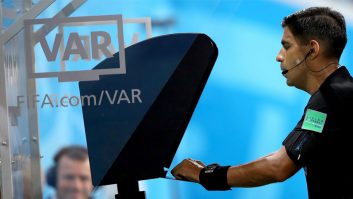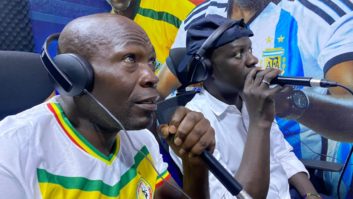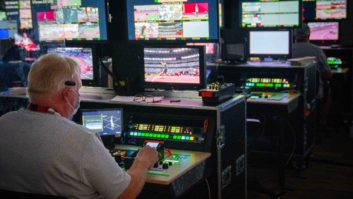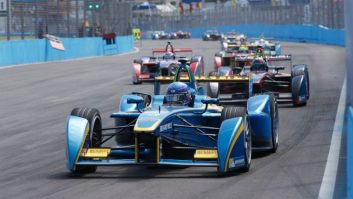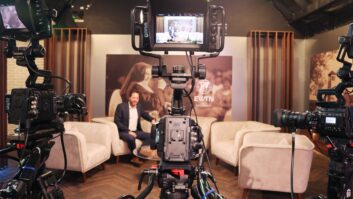Mainstream sports such as football, rugby and golf may generate the biggest UK TV audiences for sports, but there are plenty of viewers who want to see other sports represented on their screens, and on a regular basis. If you follow any sport, especially if you are cheering on a particular team, you want all the action across every match, not just the highlights.
For UK broadcasters this poses a challenge because sending a television crew and an outside broadcast vehicle to every game involves significant outlay, both in terms of staff and time. To get around this problem, what is needed is a remote solution that maximises resources and makes minority sports accessible and more viable for broadcast.
One sport benefitting from just such a solution is basketball, which is currently being shown on Sky Sports, the British Basketball League’s UK broadcast partner. Interest in the sport soared during the 2022/23 season with a 200 per cent increase in viewership across the league’s channels. With games now appearing live on Sky Sports’ linear and the British Basketball League’s YouTube channels on Thursday or Friday nights, the opening three live broadcast games saw a viewership increase of 89per cent in comparison to the previous season’s opening three fixtures.
The British Basketball League championships involves 10 clubs that play three to four games every weekend, from venues all over the UK. To capture the action, the league works closely with Timeline, a major broadcast facilities house, which provides studio space at its facility in Ealing, West London, along with technical personnel and equipment such as cameras, microphones, etc at each venue. On match days, Timeline’s Ealing studios becomes the base for the production crew and show presenters, with the company also providing identical flyaway kits to each venue. Feeds from four Sony cameras at the venue are sent back to Ealing via ethernet connections so that the production crew in the gallery can deal with issues such as colour balance, the choice of camera angles and vison mixing.
“These days, we don’t move anything around in baseband video – it’s all just data sent via ethernet cables and IP addresses,” says Timeline TV’s senior RF project manager, John Hayhurst. “The actual show is cut in EBC, which is also where the tally for the cameraman at the venue is produced. The tally is sent over an IP system, to a data transmitter so that it can control the radio cameras at the far end.”
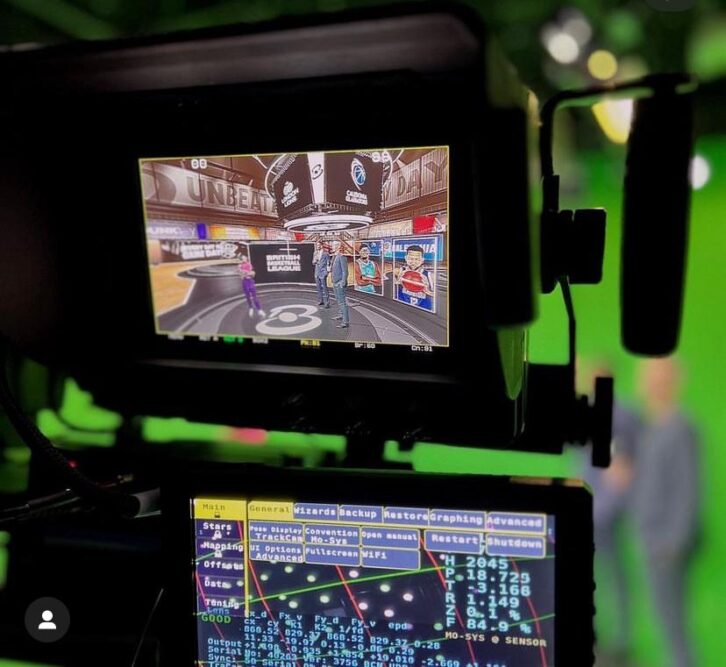
With this type of remote production set-up, camera control becomes a key feature. For the basketball coverage, Timeline has specified a system from Videosys Broadcast, a leading manufacturer and supplier of quality camera control systems, RF links and camera backs to outside broadcast providers. This system consists of three units – an Indoor Unit (IDU) based in Ealing, an Outdoor Unit (ODU) at the venue and a compact Camera Receiver (RXSM-E) mounted on the camera at the venue. The IDU, which is designed to control up to four cameras from one unit, uses either legacy or full ethernet control to integrate into an existing OCP network. When connected to the ODU (a one-watt UHF transmitter) and the RXSM-E camera receiver, the system provides an end-to-end solution from RCP to camera allowing operators to seamlessly control their camera settings, regardless of their location.
“The ultimate goal of remote production is to utilise the same production crew across more than one event taking place on the same day,” says Hayhurst. “This is what lies at the heart of the technical set-up we have put into place for the league’s basketball coverage. Years ago, covering multiple games would involve sending an entire crew to each venue, which was obviously expensive and labour-intensive. When Covid hit, we had to look at different ways of covering live events and this fuelled advances in remote production and the technology available to serve this market. Initially, it wasn’t about cost saving because broadcasters were still using a crew on site and another back in the studio, but now they are realising that if the crew in the studio are doing more than one thing – one event after another – there are resource savings to be made.”
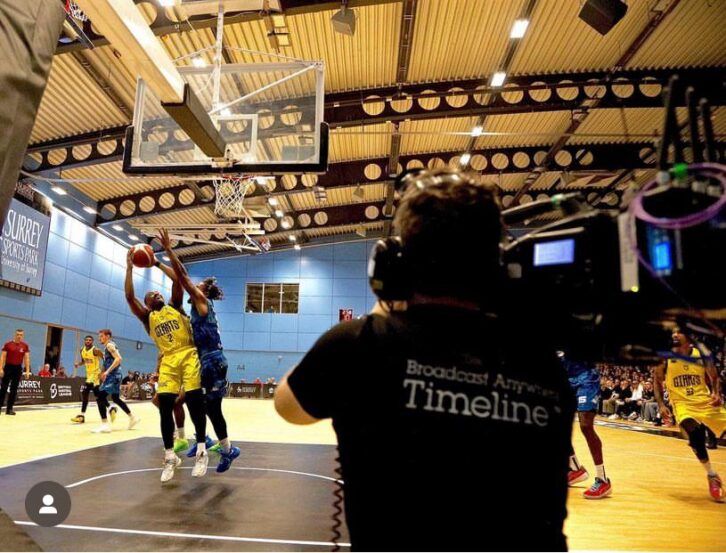
At present, Timeline is unicasting the camera control data between Ealing and each venue, but the system is capable of multicasting the same data to all venues simultaneously because the equipment used for each event is identical. Adopting a multicast approach would allow Timeline to have one IDU in Ealing feeding multiple ODUs situated at each venue, or more than one ODU at a single venue, each having a different IP address so that they can be controlled independently. Videosys’ CCU system can facilitate this because it is fully IP and has built-in software that allows set-up changes to be made via a web browser. Videosys’ CCU supports TCP and UDP delivery, which allows data to be sent over a wide area network with guaranteed latency.
“We are not multicasting at the moment, but the plan is to streamline the system even more so that eventually we can do this,” Hayhurst explains. “Right now, we are still making manual changes to get data from one place to another, but ultimately we want to get to a situation where no one in Ealing has to touch anything because the cameras are all set up the same.”
As well as controlling the cameras from Ealing, the production crew also mix the audio, which arrives at the facility embedded in the video data feed.
“In most scenarios you would have a sound mixer on-site in an OB truck, but because we are using small flyaway kits the audio comes back to Ealing to be mixed,” states Hayhurst. Generally speaking, audio is too complex to bring back to the production centre but in this case there are only about 10 microphones at each venue, so it is manageable.”
When it comes to live broadcasting, flexibility and cost savings are the holy grail for broadcasters. The more you can do with fewer people, the better. For sports such as basketball, new production models that combine advances in IP with clever technology such as Videosys’ CCU are making a world of difference. If nothing else they are making it financially viable for broadcasters to cover more matches, which can only benefit the sport’s ardent fans.
